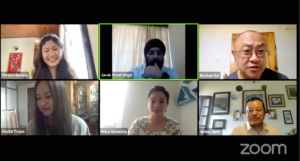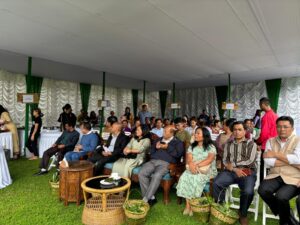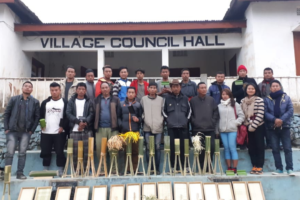Society For Urban & Rural Empowerment (SURE), Jowai and NEFAS collaborated for a Cluster Sharing Workshop which was conducted at the Tympang Club playground, in Iawmusiang, Jowai. The workshop, held on 6th April 2023, was part of the “Empowering Indigenous Communities through Agroecology Learning Circles (ALCs) for resilient, integrated and innovative natural resource management” innovation project initiated by NESFAS and with funding from MBMA as part of an Innovation Grant under the World Bank aided “Community Led Landscape Management Project (CLLMP)”, for supporting the scaling up of innovative practices to enable communities to better manage natural resources.
Members of various Agroecology Learning Circles (ALC), Headmen and Secretaries of 20 villages (both project and non-project villages) along with their village organizations attended the workshop. A number of local bureaucrats, belonging to different departments, and staff members of the MBMA, FOCUS, SURE, and NESFAS were also present at the event. The programme focused on co-sharing of the ALCs’ experience and achievements over their work on reviving, promoting and defending indigenous peoples’ food systems. The event also drove towards setting a common actionable plan for the coming years while seeking the support of the Village Councils as well.
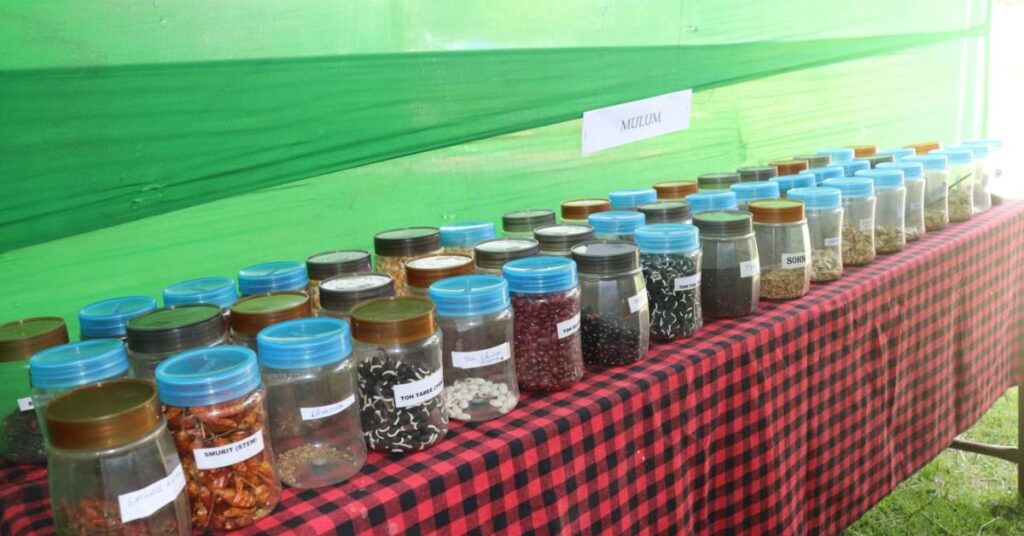
Shri. Heimonmi Suchiang, Community Facilitator of the Thadmuthlong C cluster chaired the workshop and gave the opening remarks. He shared that the goal of the ongoing NESFAS project is to empower communities to take care of natural resource management which will in turn help improve their livelihood and well-being.
Kong. Sdangroilang I Kam, Community Facilitator, Lumtrep represented the ALCs of Thadlaskein, Amlarem & Laskein Cluster and highlighted the numerous project activities that have been done by the ALC members of the cluster. Some of the few notable activities she mentioned included the “Kick off Workshops” on problem-solving, Exchange Visits, Agrobiodiversity (ABD) Walks, and Community Led Participatory Research and Experiments.
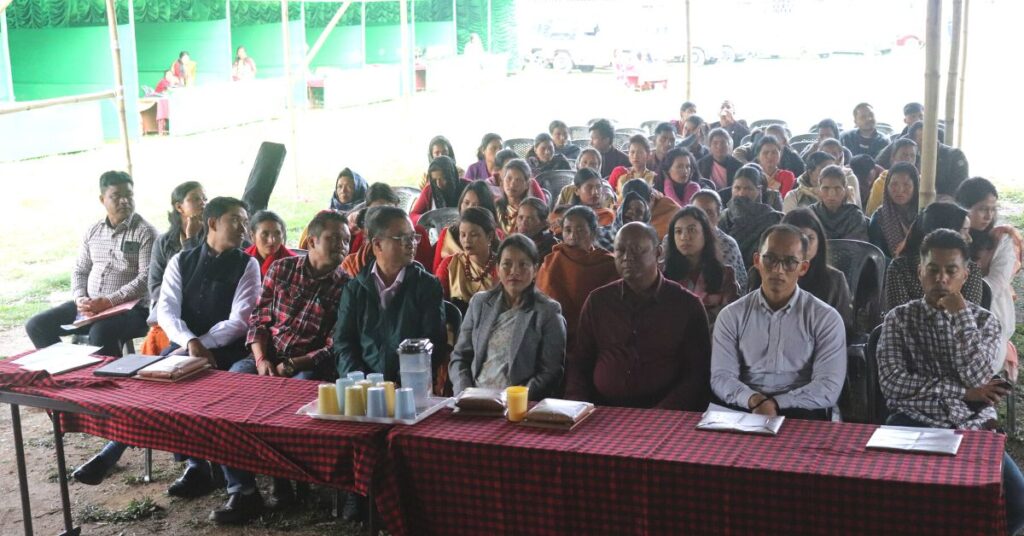
Thereafter, different ALC clusters shared the results of their experiments.
From Mukhap cluster (Mukhap, Iooksi, Mulum, Cham Cham) ALC member Kong Darihun Langstang shared that the experiment of Mukhap cluster was conducted on 220 sq ft of land. The crops that were prioritized were maize and cabbage with a focus on how to manage pest infestation on these crops. Kong Darihun shared that in order to control white grub infestation in maize; the ALC members used ash during sowing. Alternately, for managing armyworm infestation, a solution made out of mixing tobacco leaf, ginger, onion, chilly, garlic and lantana leaf was used on the maize plant on reaching the height of ½ feet. For treating looper infestation in cabbage, tobacco leaf (duma mutia) and chilly were used as bio-pesticides.
Experiment conducted by the Thadmuthlong C cluster (Thadmuthlong C, Mynso A, Mynso B) was shared by ALC member Kong. Ebrialty Sungoh. Experimenting in 220 sq ft of land, the group prioritized managing white grub infestation in turmeric and found a simple solution of applying salt on the turmeric before sowing as the most viable means of controlling infestation by the white grub pest.
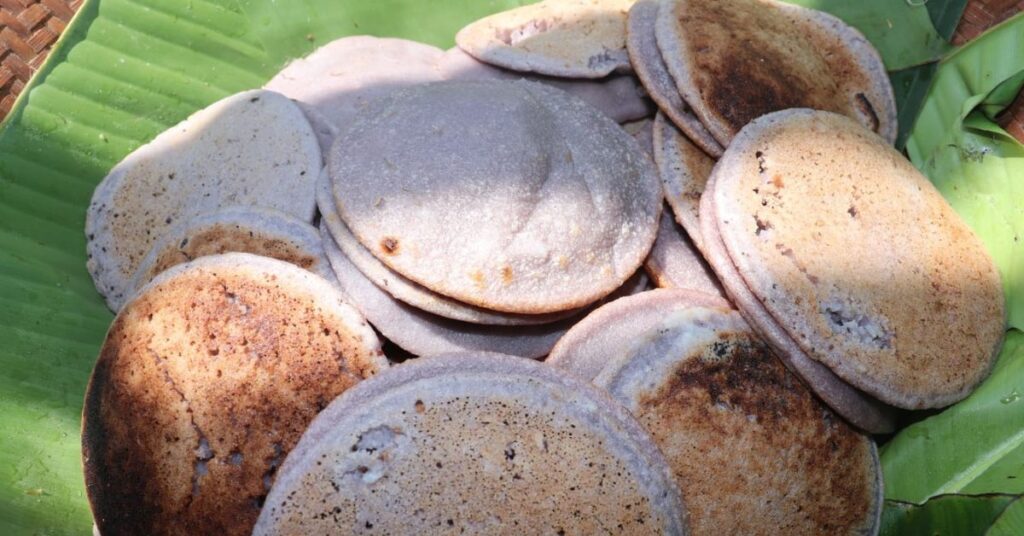
From Muphlang (Muphlang, Mustem, Mupyut, Skhenpyrsit, Samanong) and Iongliwit (Iongliwit, Namdong B, Madur) clusters, the results of the experiment conducted on 220 sq ft land were shared by ALC member Kong. Ibathymmai Shylla. With an emphasis on controlling looper infestation in cabbage, the ALC cluster found that an efficient remedy to looper infestation in cabbage was using tobacco leaf (duma mutia) as a bio-pesticide.
Kong. Wanpoiri Sumer (ALC member) took the initiative for Lumtrep cluster (Lumtrep, Ksehrynchang, Sohmynting, Larnai) and stated that the cluster she represented worked on preventing pest infestation in ginger. She shared that the ALC cluster used eggshell and tobacco leaf for treating lopper infestation with great results.
Egg shells as an effective bio-pesticide were also backed by the results of the ALC from Sohmynting village. Kong Roomika Pyrtuh from Sohmynting village shared that using egg shells as a biopesticide greatly helped in treating pest infestation in peas. She stated that after using egg shells to treat pests, the peas turned from dried yellow plants with dead roots to green and healthy plants. This also led to a higher crop yield, she added, while urging her fellow farmers to try the same experiment instead of using chemical fertilizers.
Thereafter, Kong Hamsniawpher Suchiang, member of PGS/ALC, Mulum village briefly talked about the importance of Community Seed Banks. She stated that community seed banks are needed to preserve and revive local varieties of seeds and crops while sharing that the community seed bank at Mulum holds 60 varieties of seeds. She concluded by mentioning that two more community seed banks will be established at Lumtrep and Sohmynting in the coming days.
Shri. S. Lyngdoh, District Program Manager, Meghalaya Basin Management Agency CLLMP, West Jaintia Hills voiced his appreciation for SURE and NESFAS on the innovative work that the two organizations have been undertaking. Shri. S. Rani, District Horticulture Officer, West Jaintia Hills, on the other hand, expressed his gratitude to all the ALC members for sharing their indigenous knowledge.

